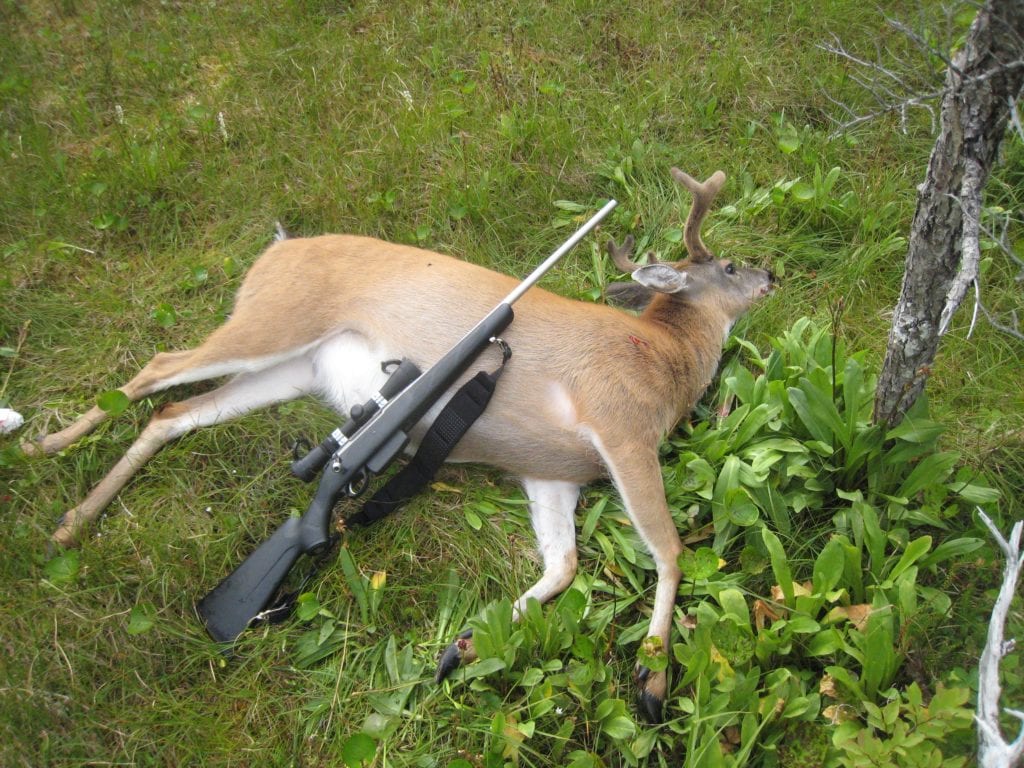
The 2019 deer hunting season began on Aug. 1, and the outlook for success is good.
The population of Sitka black-tailed deer, which were transplanted across Prince William Sound in the 1920’s, appear to have fully recovered from the highest snowfall on record during the winter of 2011/2012.
Twenty-seven feet of snow inundated Cordova and surrounding areas that winter, and while the National Guard was called in to shovel roofs and prevent building collapses, the deer were left on their own.
Forced to the beaches by snow that covered their prime forage and made movement impossible, the PWS population declined 50 to 70 percent.
Monitoring the deer population has always been a challenge, but since 1987 deer pellet-group studies have been conducted by the Department of Fish and Game to establish baseline data.
Basically, the study involves hiking the same transect lines up islands around the Sound, while counting the number of piles of deer “poop” being observed. The pellet counts are made during late May and early June at eight locations, when snow melt is sufficient, but the plants have not fully leafed-out.
While both heavy rains (which causes the pellets to disintegrate) or rapid “green-up” (growth of vegetation which blocks views of pellets) can influence the counts, the average number of pellets has gradually rebounded back from an all-time low in 2013 to the highs seen just before the big snow event.
Anyone who has longed for more days on the slopes of the Mt. Eyak Ski Area can tell you why. Mild winters with recurring cycles of rainfall on much of the lower areas have been common, and what is bad for the skiers and snowboarders is good for the deer. The average temperature observed at the Mount Eyak monitoring station, 1,500 feet elevation, between Oct. 1 and March 3 of this past winter was above normal and at times reached the highest level recorded.

In fact, much of the skiing in the past few years has been restricted to the “Bunny Hill”, where the Sheridan Ski Club has been operating a snow-maker and Snowcat to cover the area -which must bemuse the occasional deer that wanders by.
The Sitka black-tails here are on the extreme northern limit of their range, and a cycle of big die-offs has not been unusual. At one time the harvest was limited to one buck per season, and deer were seen wandering up the streets of Cordova after swimming across from Hawkins Island.
Expanding the harvest limit, and including the taking of does, was slow in adoption, but has become an effective way of keeping the population within the carrying capacity of the area.
Hunters are now limited to 5 deer per season, which runs from Aug. 1 to Dec. 31. Only bucks can be taken in the first part of the season, with doe harvest beginning on Oct. 1.
Deer and moose play a big part in filling the freezers of many locals, and it is always good news to hear that the populations of both species are in good shape.
And while counting moose via aerial surveys plays a major role in their management, it is perhaps amusing to realize that deer droppings play a key role in determining the health of their population.
Especially, when you consider, according to Buckmaster’s Magazine, that deer defecate an average of 13 times a day.





